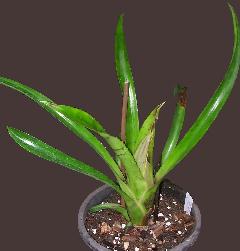
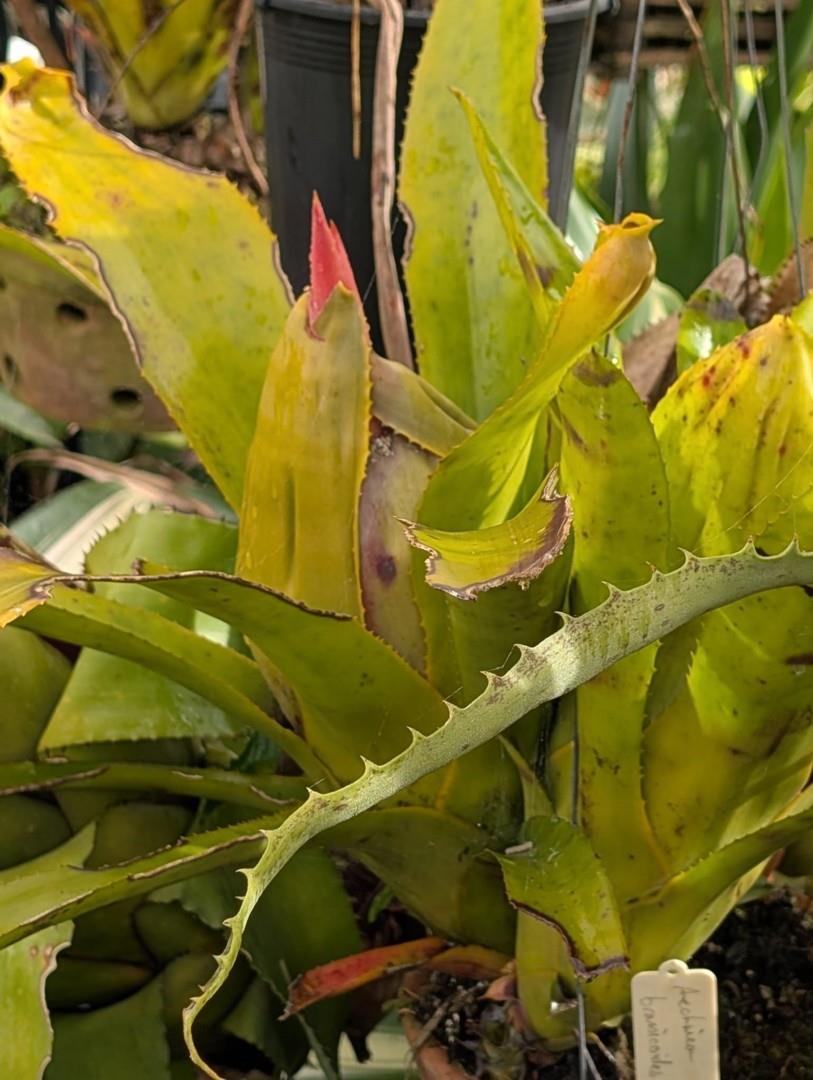
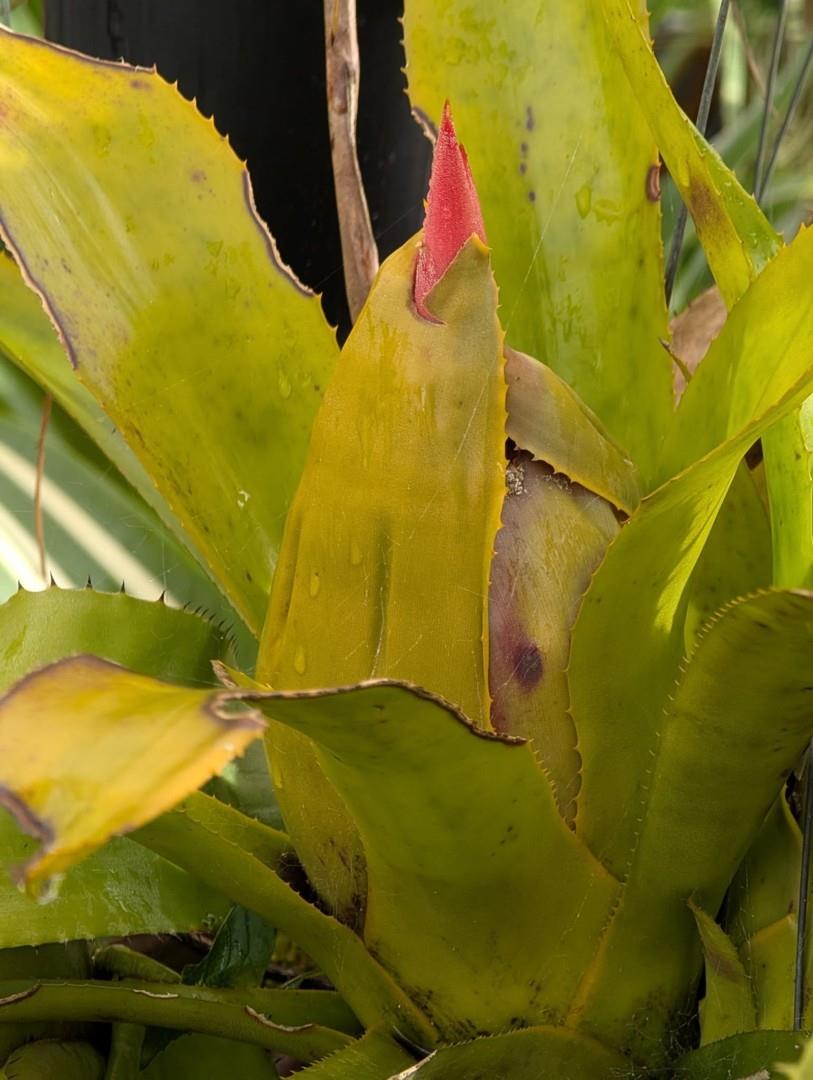
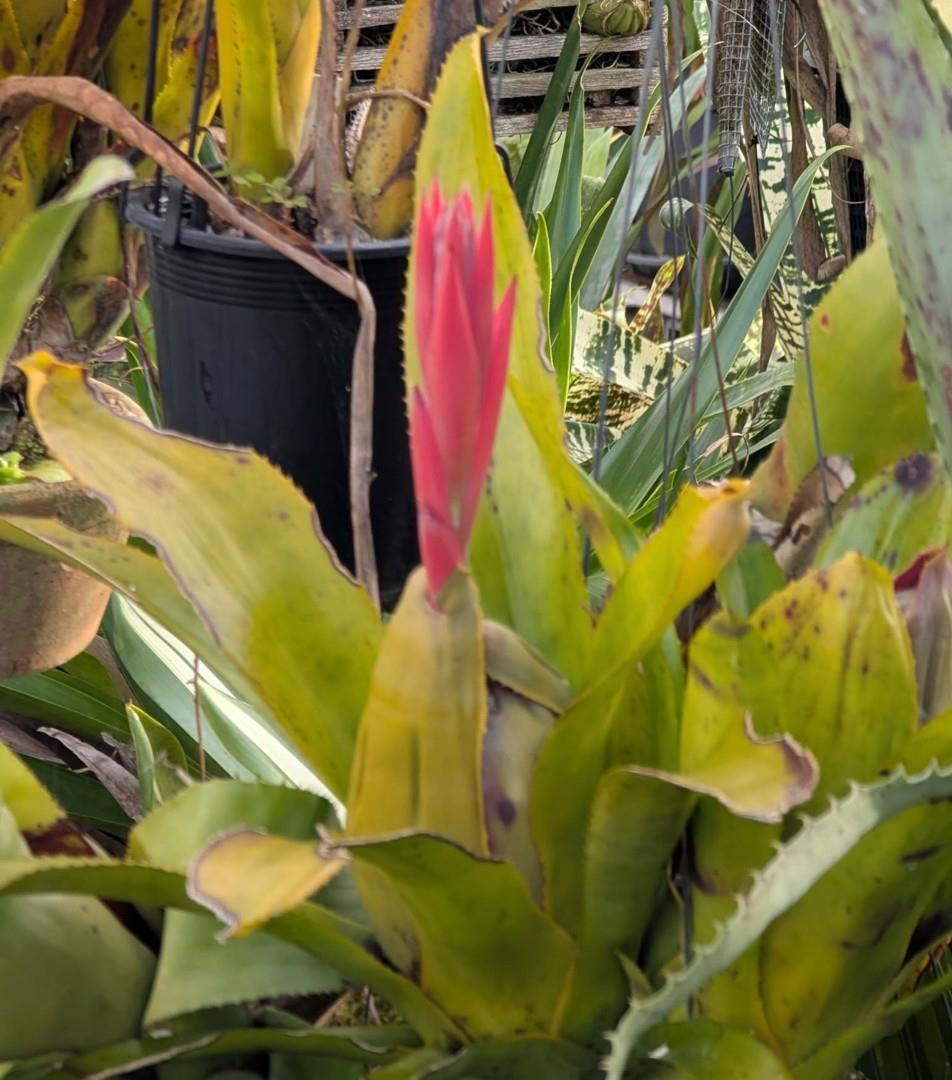
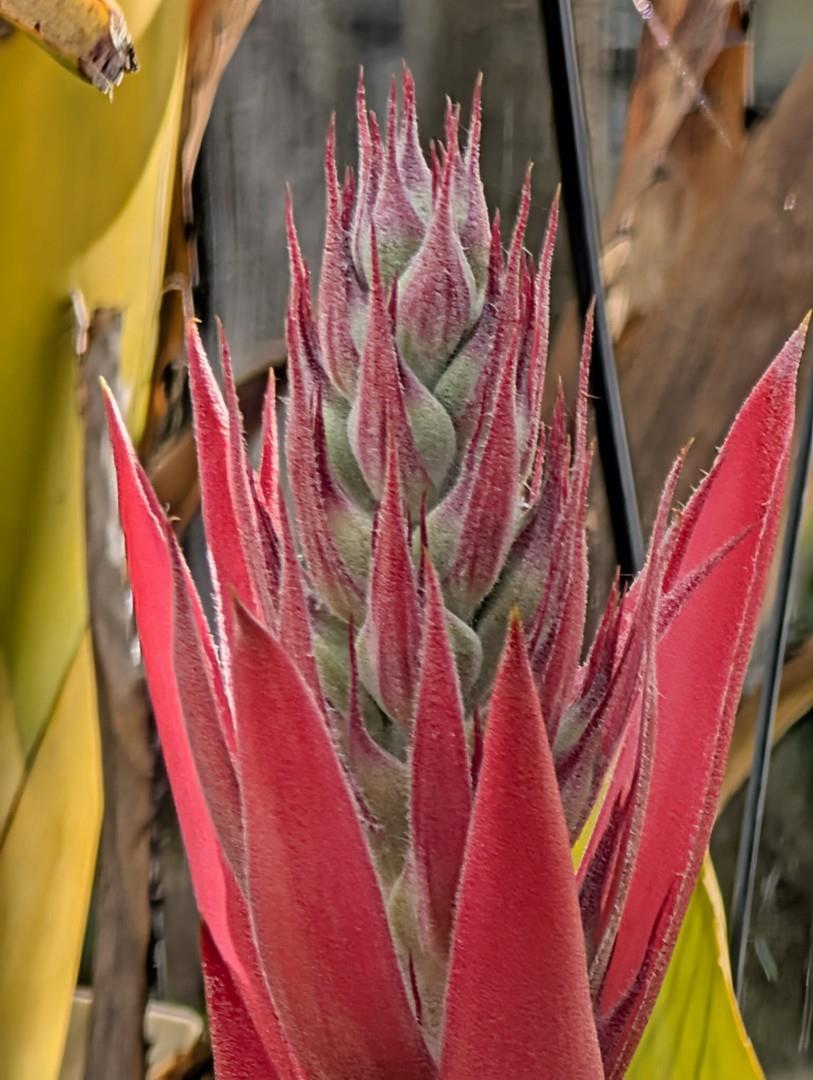
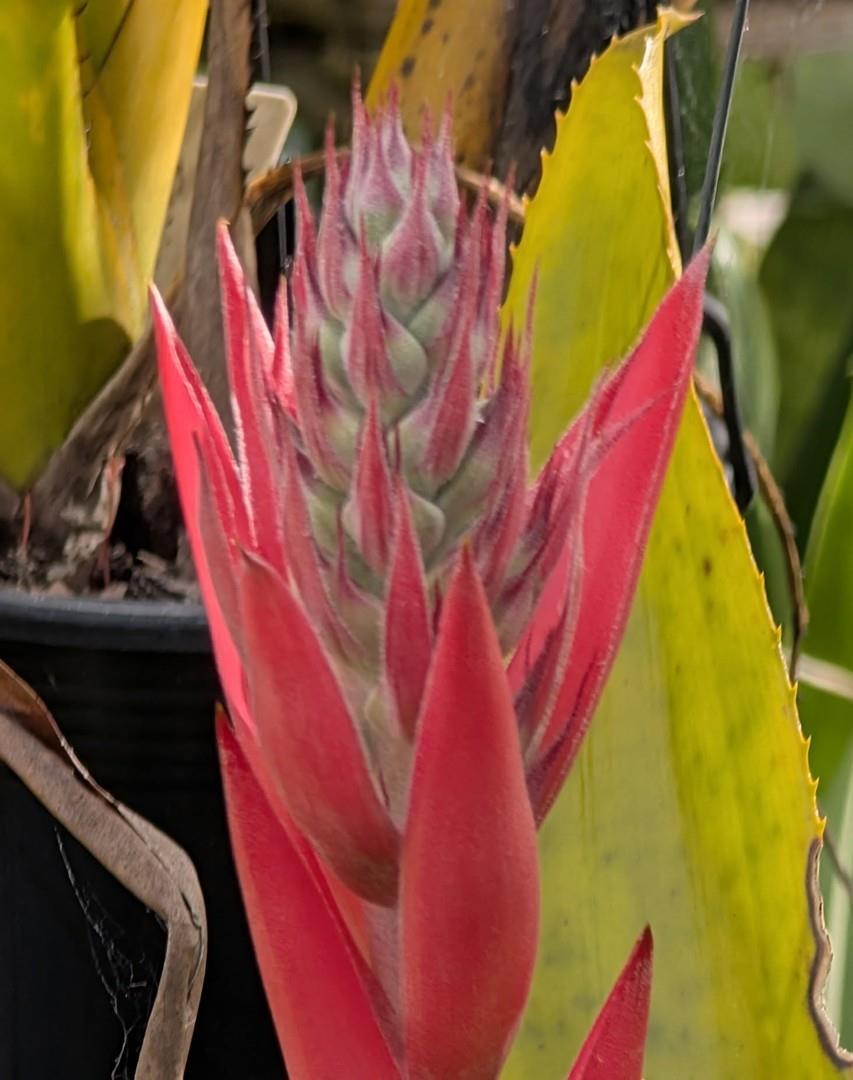

Introducing: Aechmea brassicoides by Harry E. Luther in J. Brom. Soc. 45(5): 218. 1995
Aechmea brassicoides was last noted in the JOURNAL more than 30 years ago (volume 13:57-58, 1963) as a species of the defunct genus Gravisia. Readers familiar with the name Gravisia probably also remember 25cent cups of coffee.
Aechmea brassicoides was described by Baker in 1882. The type and all subsequent collections have been from the vicinity of Kaietur Falls in Guyana. The plant is usually an epiphyte.
Apart from having a somewhat attractive inflorescence, this species presents a notable growth habit reflected in its specific name. The "Cabbage Bromeliad" produces, at maturity, a series of densely overlapping, often imbricated leaves that effectively create a seal over the center of the rosette. The protected hollow formed may be advantageous in acquiring an ant colony. Many epiphytes in areas of poor soil form relationships with ants as part of their nutritional strategy. Ants bring all sorts of debris to their nest; this nutritious compost is usually rich in nitrogen and other minerals important for plant growth. Epiphytes with ants often grow more strongly than those without ants.
When Aechmea brassicoides comes into flower, the developing inflorescence punctures one or more of the overlapping, centermost leaves. This condition sometimes results in a plant with an inflorescence growing from one side of the rosette instead of straight from the center. Judges should take note !
Protologue
Aechmea brassicoides (Pironneava) Baker, n. sp. Jour. Bot. London 20: 239. 1882.
Rhizome creeping freely, throwing out numerous buds, till the plant forms a mass.
Leaves horny in texture, green and glabrous on both back and face; dilated base oblong, half a foot long, 3-4 inches broad; lamina lanceolate, above a foot long, 2.5-3 in. broad at the middle, narrowed gradually to a deltoid tip, margined with close small, pungeut deltoid prickles.
Peduncle a foot and a half long, piercing through its large erect oblong-navicular lowest leaf, which is above half a foot long and coloured bright red on both sides; the leaves next succeeding much smaller, oblong, obtuse and imbricated; the upper more distant, lanceolate, thinner in texture and coloured pale pink, the exposed upper part of the peduncles white-floccose, like the rachis of the panicle.
Inflorescence a panicle, half a foot long, with numerous short sessile spicate branches, each containing not more than 3-5 tightly packed multifariously-arranged flowers, the lowest spike subtended by a pink lanceolate bract, 2-3 in. long, the bracts of the upper spikes with a long linear cusp and not more than an inch long. Ultimate bracts subtending each flower lanceolate-acuminate, with a dilated base, white-floccose, 0.75-1 in. long.
Ovary very small.
Sepals linear oblong, horny, imbricated, floccose on the back, 3/8 in. long, obtuse, with a small cusp.
Petals yellow, with a claw as long as the sepal, and an oblong lamina 1/3 in. long.
Genitalia not protruded, the filament reaching to the top of the petal-claw and oblong anther 1/8 in. long.
Style as long as the petals.
Kaieteur Savanna, Jenman 957! A near ally of the West Indian Aechmea aquilegia, Griseb. (Bromelia aquilegia, Salisb. Parad., t. 40), which in my synopsis of the genus (Journ. Bot. 1879, p. 132) I have wrongly cited under A. bracteata. They really belong to two different sections, the flowers being arranged in aquilegia multifariously and in bracteata, distichously.
The name brassicaeformis is suggested by a note of the collectors that the inner leaves form a heart like an early spring-cabbage.